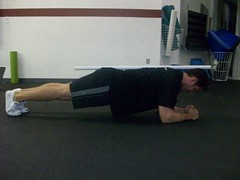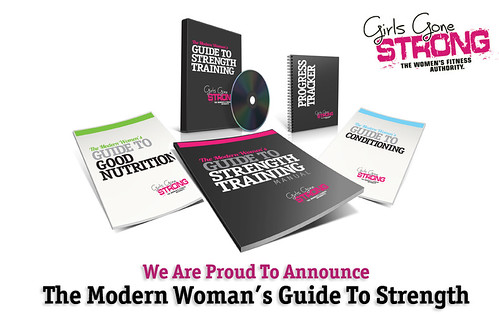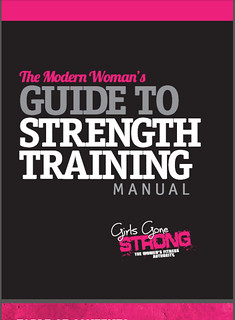Every Wednesday we hold a staff in-service at Cressey Sports Performance where the coaching staff along with the interns get together and talk about “stuff.”
One week Eric may break down thoracic outlet syndrome and how to go about programming around it. Another week Greg may discuss some new sprinting drills and how we can better cue our athletes with their movement training.
Chris may take a week and touch on some elbow or shoulder anatomy. I’ll take the reigns one week and speak to the differences between external vs. internal cueing (or just reenact a full blown assessment using nothing but shadow puppets).
And Andrew will jump in on some weeks and discuss youth training or how it is he’s able to maintain salon-quality hair at all times.
It’s fascinating.
As you can see, we hit on any number of topics and nothing is ever off the table. We even had one of our current interns discuss the merits of blood-restriction training recently and how if may have some merit with regards to training injured athletes. The idea being that the increased hypoxia will help engage or stimulate type II muscle fibers in the absence of appreciable load.
I’m a bit skeptical, but he made some interesting points!
Nevertheless the idea behind the in-services is to promote an open platform for learning and for open dialogue and discourse.
Yesterday happened to be what we like to call the Intern Programming Challenge. The idea is simple: We give the interns several specific scenarios with regards to injury history and musculoskeletal dysfunction of an athlete/client, and they’re expected to write a 2-day/week program for each one.
An example might be:
1. Severely sprained right ankle with secondary external impingement in left shoulder.
OR
2. Extension based back pain.
OR
3. Grade II hamstring strain with no left eye due to a pirating accident and an explosive case of diarrhea.
We all gather together and dissect each person’s program(s). Admittedly it can be an intimidating environment because no one ever likes seeing their work held under a microscope for public scrutiny. But as Eric noted yesterday, sometimes the best way to get better is to have your stuff ripped apart.
Not that we’re purposely ripping programs apart to make our interns feel bad. Rather, we’re using this as an opportunity to refine their programming skills and to think more objectively and “outside the box.”
Take secondary external impingement for example. The word impingement is a garbage term as it is, because it speaks nothing to what’s actually causing the impingement (or pain) in the first place.
In watered down terms all “secondary impingement” means is that we know it’s not caused from a bony growth or deformation like a bone spur (this would be referred to as primary impingement, where the boney growth affects the acromion space and makes it narrower).
Instead we can chalk secondary impingement towards things like poor t-spine mobility, anteriorly tilted scapulae (poor scapular stability), poor tissue quality in the pec, pec minor, and/or lats, downwardly rotated scapulae or “depressed” shoulders, so on and so forth.
Conventional wisdom may dictate that the prone plank is an innocuous enough of an exercise where it would be a nice fit for most people, even in this example.

Mmmmm, maybe. Maybe not. It depends.
The plank position will cause a lot more approximation in the shoulder joint (jamming the humeral head into the shoulder socket itself) which may be problematic for someone with external impingement.
It’s this kind of critical thinking – and the type of feedback we give back to our interns – which helps them become better and programming.
Lets dive into another common scenario……
Extension Based Back Pain
While flexion tends to get all the attention and love, extension-based back pain is something that’s grown in prevalence in recent years – especially in more athletic populations which involve a lot of extension and rotation. Think: baseball, golf, etc.
Too, extension-based back pain is very common in the more “meatheaded” population in addition to the personal training and coaching fields (where we tend to stand on our feet all day).
I’m not going to re-invent the wheel and elaborate on the specifics since I already wrote on this topic extensively HERE.
Needless to say, since we’re on the topic of programming I wanted to highlight some ways and ideas we could work around the issue when working with a client or athlete who exhibits this condition.

Seriously, read my post HERE if you’re curious how to assess for extension-based back pain as well as some thoughts on how to address it (rib cage position, how to cue certain lifts differently, and how to address proper breathing mechanics).
Do it!!!!!!
The most severe cases will typically manifest as Spondylolysis. “Spondy” refers to a fracture of the pars interarticularis portion of a vertebra (95% of the time, it’s L5). The pars essentially connects the vertebral body in front with the vertebral joints behind.
Presence of spondylolysis runs the gauntlet in terms of who it effects, but its highest prevalence is among weightlifters. That said we’ve seen a huge influx amongst young athletes as well, especially those who participate (and specialize too early) in sports that require excessive extension and rotation (ie: baseball).
I wrote a post on Spondy HERE if you’re interested.
1. First and foremost the name of the game when dealing with ANY injury is to ensure you’re eliciting a training effect.
No one wants to feel like a patient when they’re training. I mean, what fun is it to head to the gym only to perform a litany of ankle mobility and breathing drills?
Booooooorrrrrrrrriiiiiiinnnnnnggggggg.
This isn’t to say that those things won’t need to be addressed, but it’s important to understand that your job as a trainer or coach is to garner a training effect for your clients.
2. Whenever we have an client or athlete with a legit case of Spondy start at the facility our general rule of thumb is no back squatting for TWO YEARS – and that’s even if they’ve gone through an entire “treatment” with a back brace.
Placing a bar on the back means you’re moving it further away from the axis of rotation which increases shear forces on the spine ten-fold.
In this case things like Goblet Squats may be a better fit. But even then, you may need to hold off for a few months before you implement them into a program.
3. Single-leg work will almost always enter the equation, but you need to be very cognizant of back positioning.
If someone lives in extension and has extension-based back pain, they’re going to want to go into extension. I know, it’s confusing.
It’s important to engrain proper rib positioning, core bracing, and pelvic positioning when doing any single leg work.
4. To that end, variations like slideboard reverse lunges are an awesome fit because they inherently make people use less weight, which in turn will result in less axial loading on the spine.
But even if we’re not dealing with a severe case like Spondy, it’s crucial to stress “neutral spine” throughout.
Start with dumbbells and progress to barbell variations.
5. Glute bridging is fantastic provided the back stays in a posteriorly tilted (flatter) position throughout the entire set.
6. Anything which promotes posterior pelvic tilt with someone with extension-based back pain is going to be money.
To that end, ensuring they’re squeezing their glutes during things like chops and lifts will be paramount.
I’ve often incorporated Posterior Pelvic Tilt Hip Thrusts (via Bret Contreras) into the mix:
I’ll be your BFF for life if you do these in a public park or something. I dare you to perform them in the waiting area at your doctor’s office!!!!
That’s just some food for thought. It’s important to embrace a more critical mindset when writing programs – especially when writing them for people with specific issues or dysfunction(s).
Hope that helps.
Now excuse me as I go practice my shadow puppets…..;o)

 James Cerbie, CSCS, Pn1, USAW, Crossfit Level 1
James Cerbie, CSCS, Pn1, USAW, Crossfit Level 1



